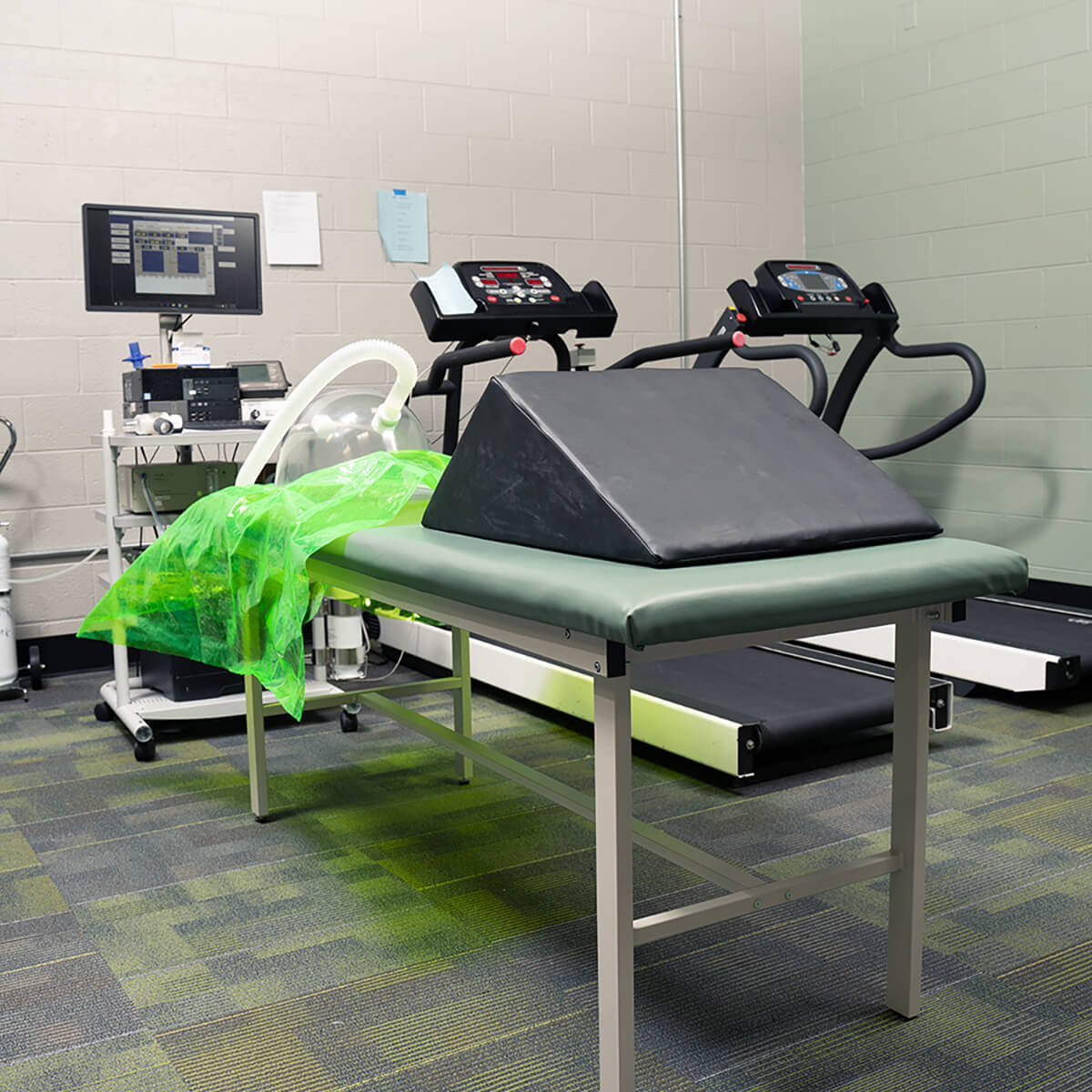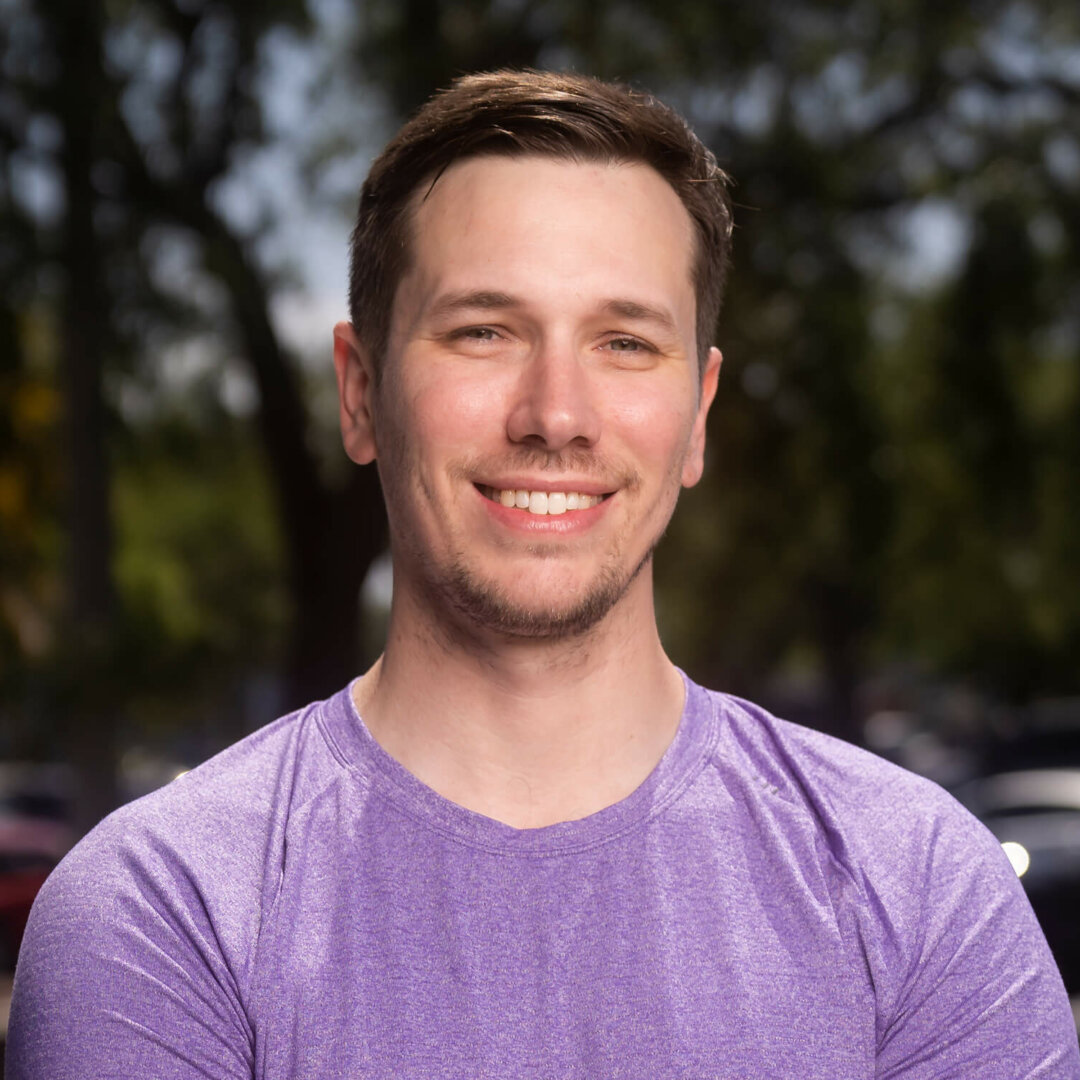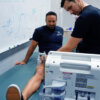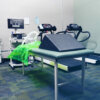Body Water
Deuterium Dilution
Deuterium is a stable isotope of Hydrogen and deuterium dilution serves as the “gold standard” or criterion method for total body water assessment. Researchers use a labeled water that contains a large quantity of deuterium (“heavy water”) and measure concentrations in the urine, blood or saliva to measure total body water. There are other isotopes that can be used in a similar manner to the deuterium dilution method, but most commonly it is deuterium that’s used as a tracer. Using this method subjects void their bladders than drink water with the labelled isotope and after it has equilibrated in the body for a duration of time researchers most commonly collect a urine sample. The urine is then analyzed using a mass spectrometer to determine total body water levels. This method is expensive, time consuming and requires sophisticated laboratory expertise 7. For this reason, other measures have been developed to more conveniently measure total body water (TBW).
Bioelectrical Impedance Analysis (BIA)
BIA technology uses a small electrical current that is transmitted through your body extremities and between voltage detecting electrodes (contacting hands and/or feet). Water conducts electricity and tissues like fat mass and bone have very little water which increases the resistance (impedance) of the electrical current thereby decreasing the rate of its transmission. Based on fat mass content in your body, the impedance (resistance) of the electrical current is measured using Ohm’s law (resistance = volume / current) which can then be applied in an equation to quantify water volume, percentage body fat, and FFM 2. There are many different types of BIA devices available and vary based on specific frequencies, cost and complexity, which will impact the validity and reliability of the specific device being used. Nowadays you will commonly see BIA technology integrated into at-home body weight scales. When used for body composition assessment, research indicates that BIA is comparable to DXA when estimating BF%, fat mass or fat-free mass (FFM) 8. However, other research indicates that single assessments using DXA or BIA is questionable due to their accuracy on an individual level 9. When compared to deuterium dilution for measuring TBW, BIA is close in accuracy, but still slightly underestimates TBW 10. BIA shows promise in accurately estimating TBW, however accuracy in measurement can vary based on the population being studied and with little research comparing BIA to deuterium dilution, the validity to accurately estimate TBW remains questionable 11. Nonetheless, evidence suggests BIA is acceptable for assessing TBW and displays acceptable accuracy when assessing body composition if incorporated into a multi-compartment model 9. Another tool that shares similarities to BIA known as Bioelectrical impedance spectroscopy (BIS), seems to exhibit greater validity and reliability than BIA when assessing TBW 7 12.
Bioelectrical Impedance Spectroscopy (BIS)
BIS features the same underlying technology as BIA to estimate body composition and water, which includes an electrical current traveling through the body between electrodes to measure the impedance of the electrical current. BIS devices differ from BIA devices by utilizing a ‘spectra’ of frequencies, which is where the term spectroscopy comes from 11. Although there are single and multi-frequency BIA devices on the market and it's unclear at what frequency a BIA could be considered BIS; BIS uses Cole modelling to predict body fluids, which has been suggested to be superior for assessing body composition using impedance based methods 11 13 14. BIS is also useful in differentiating between intracellular and extracellular body water. The underlying principles used for BIA and BIS are the same for estimating body composition and either device can acceptably be utilized for body water estimations, however it appears BIS is more accepted 7 9 11 14. It’s important to keep in mind the underlying principles for how these impedance based devices were developed and they’re primarily for body water assessment, although they can predict body fat % (BF%), other body composition methods would be more acceptable.
Body Composition
There are a number of techniques and methods available for measuring body composition, specifically fat mass and/or fat-free mass (FFM). The only direct measurement of body composition would involve performing an autopsy on a human cadaver to dissect and weigh various tissues and organs, which is obviously impossible for free living experiments. Therefore, we estimate body composition based on what we know about the weight and composition of various tissues in the body. It’s important to understand that there is no perfect estimate and all techniques and methods have error rates associated with them. For this reason, we cannot place a high level of importance with a specific percentage of body fat. Rather, we use it as an objective measure to quantify and track changes to determine the effectiveness of specific interventions.
Skinfold
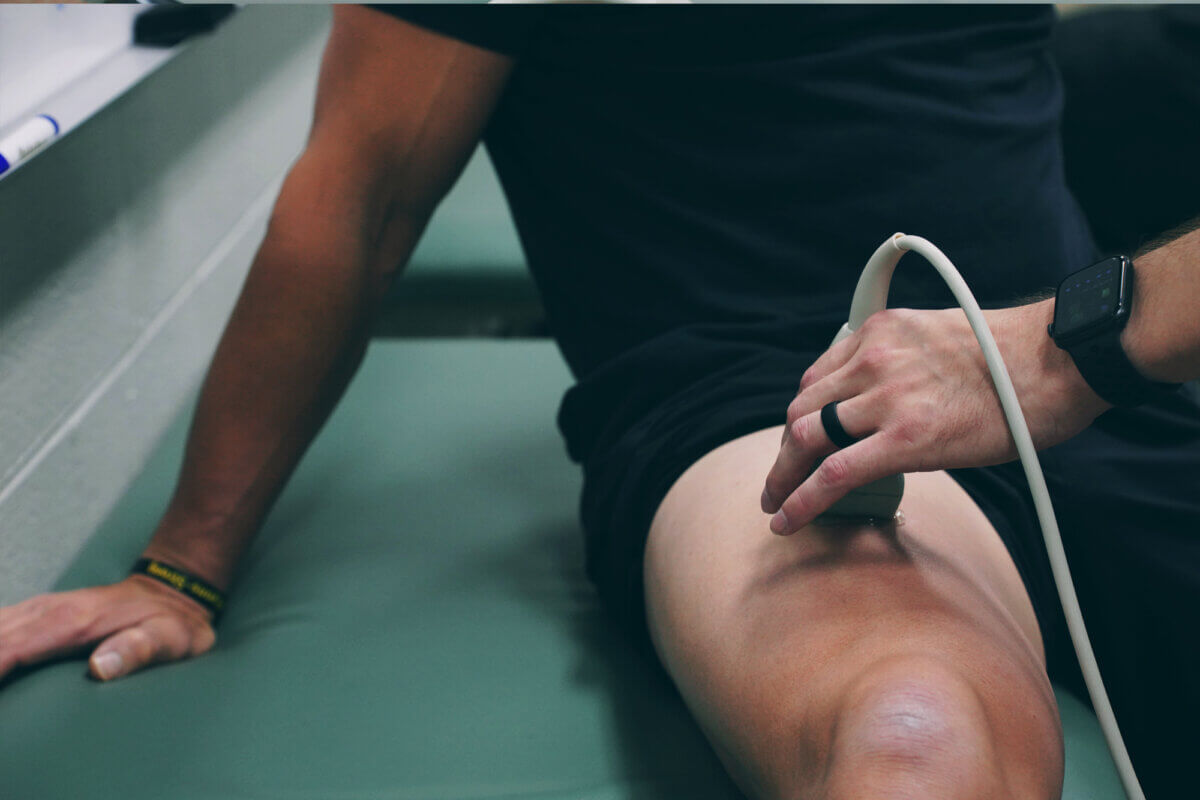
The most common and cost-effective method for estimating body composition is the skinfold technique. This technique assumes a 2-compartment (2C) model (more on multi-compartment models later), splitting body weight into fat mass and FFM.
This technique requires firmly grasping the subject’s subcutaneous fat and skin with the thumb and forefingers to measure the thickness (in mm.) with a caliper. You can accomplish these measurements with as few as three sites or as many as seven including the triceps, subscapular, suprailiac, abdominal, upper thigh, chest, and midaxillary. Measuring seven sites give a more accurate estimate of BF% because it can account for body fat distribution, some people hold more fat in their lower body compared to upper body. The sum of these site measurements are added together and plugged into a prediction equation to estimate body density, which is then plugged into the Siri equation to estimate body fat percentage (BF%) 15. There are a number of body density prediction equations available and it’s important to use a population specific equation because the coefficients used in the calculations can produce inaccurate estimations for individuals with varying body fat levels. When using an appropriate population specific equation, skinfold fairly accurately predicts BF% (± 3-4%) 16. The great thing about skinfold is not only the low cost, but you can track site-specific changes to gauge the rate and location of fat loss. Additionally, this is one of the few measurements that actually assess fat thickness, most other measures use X-ray beams and imaging techniques or electrical currents to assess fat mass. This technique is only as accurate and reliable as the technician who is performing the test. The technician must have a lot of experience developing this skill to precisely identify anatomical site location and accurately measure fat thickness consistently. When compared to computed tomography (CT scan) skinfold shows a strong correlation when comparing measurements performed in the abdominal region 17. However, studies comparing skinfolds to the gold standard 4C model, results indicate large individual error rates, but acceptable group average values 18 19 20. Meaning, when you test one person the error rate can be much higher compared to measuring and averaging the BF% of a group of people. For example, you could compare skinfolds to another method and see an over or under estimation in BF% by 6%, but when comparing the group average BF% the error in BF% estimation could be only 2%. These are arbitrary numbers and don’t reflect the true error rates of skinfolds, those will vary depending on the equation, population and criterion method being used for comparison. Nonetheless, skinfolds are the most cost-effective method and with a skilled technician and correct equations, they can provide an accurate estimate of body composition.

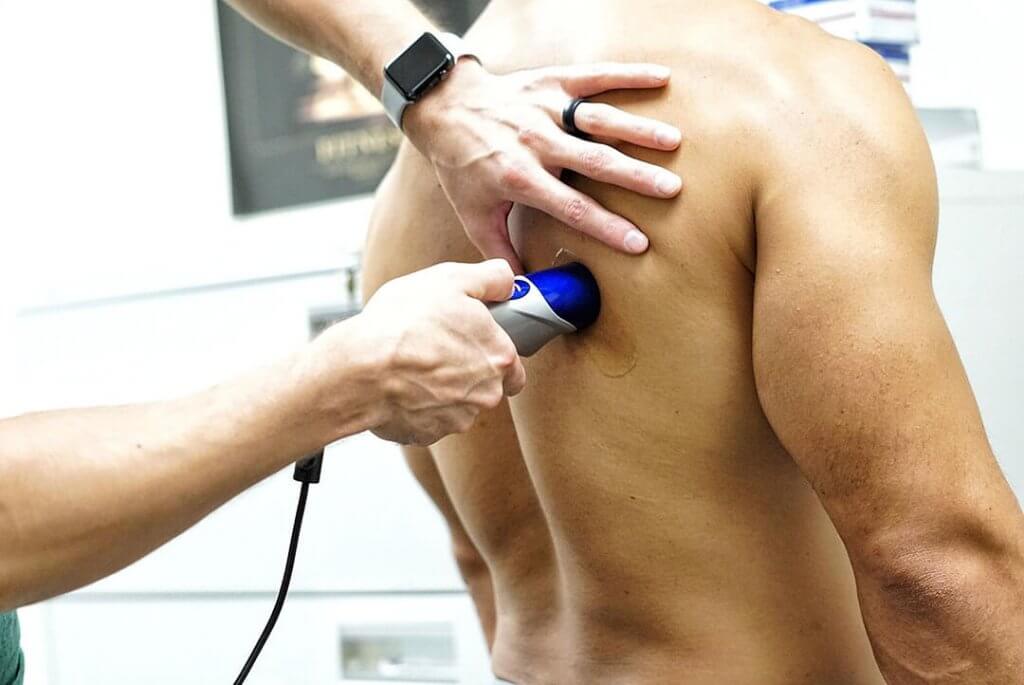
A-mode Ultrasound
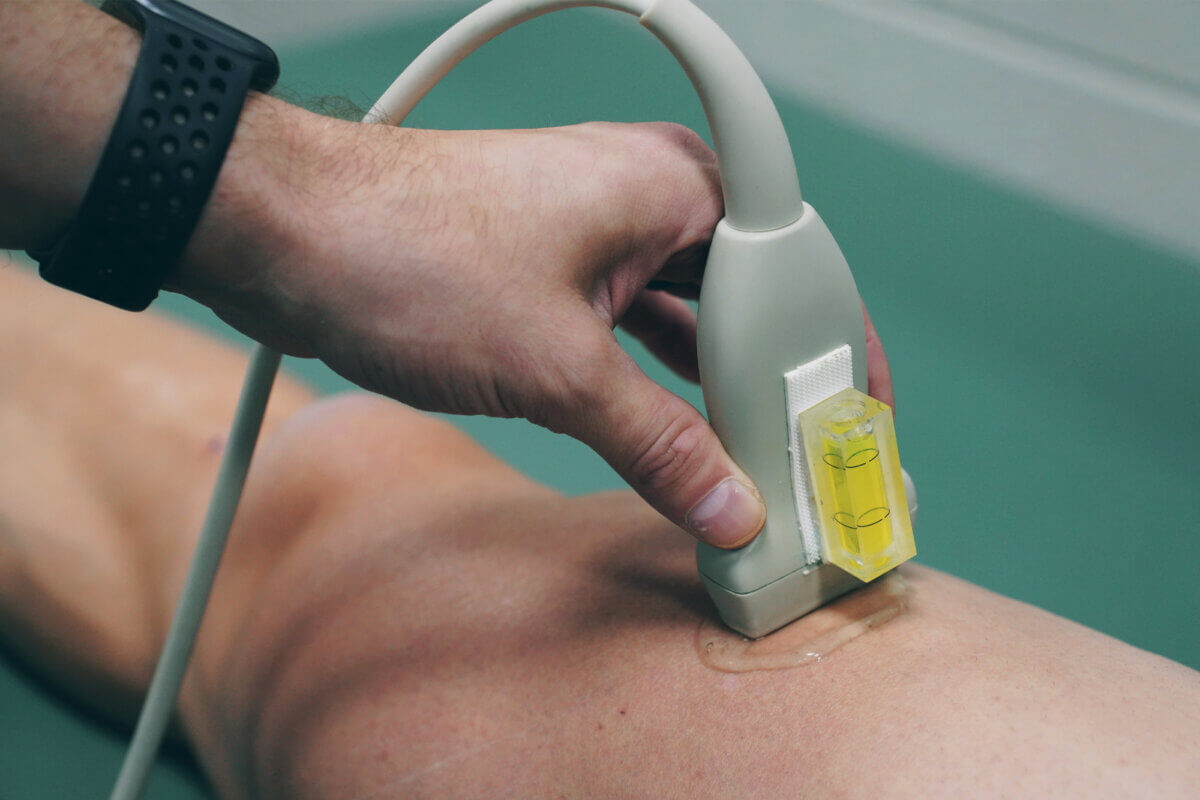
A-mode ultrasound uses ultrasonography technology, which transmits a signal through the skin and tissues and the reflection of the signal at tissue boundaries is transmitted back as an “echo”. There is also another type of ultrasound known as “B-mode” (we’ll cover later), but we’re specifically referring to A-mode ultrasound. Bodymetrix has developed a handheld portable device that is used similarly to how skinfolds are conducted. The device can be used to measure as few or as many sites as desired, simply select the equation and number of sites from a drop-down menu in the software. This technique also relies on the skill of the technician. One of the primary benefits is being less invasive since it does not include “pinching” the subject and while the cost is much less expensive than other sophisticated laboratory equipment, it is still more expensive than skinfolds. The unique aspect of this device is that it can also produce an image of the muscle and fat layers. This device has not been validated to measure muscle thickness, but some researchers suggest it could be a useful tool for measuring acute changes in muscle thickness 21. For body composition it hasn’t been validated adequately to the same degree as other measures, but studies show strong agreement between skinfold and air displacement plethysmography (ADP) 22 23.
Body Volume Measurement
Underwater weighing (UWW) and air displacement plethysmography (ADP) accomplished via Bod Pod, are used to measure body volume by applying Archimedes principle, which allows for calculation of body density. Body density can then be used in an equation (generally the Siri equation) to calculate BF%. Underwater weighing is conducted by having the subject sit on a flimsy carriage that is connected to a scale (it’s like a human produce scale) and lowers them into a pool of water. The subject’s nose is pinched closed and they are instructed to blow out all of their air as they are slowly submerged into the pool in a fetal-like position. The testing procedure for this technique is probably the worst compared to others. Imagine exhaling all of your air while hunched over, remaining as still as possible, while being lowered into a pool while researchers attempt to record your weight. Prior to being submerged in water, researchers measure residual lung volume to account for air trapped in the lungs after full exhalation. The Bod Pod is very similar to underwater weighing, except using air, and involves a much more comfortable testing procedure; although those who are claustrophobic may not agree. Subjects are placed in a large plastic “pod” like device with a small window. While sitting on a small seat wearing a swim cap, body volume is measured within a few minutes by subtracting the initial volume of the empty chamber by the reduced air volume with a person inside. This method estimates body composition very closely to hydrostatic or underwater weighing, since they use similar underlying principles. Underwater weighing was previously considered the gold standard and criterion method to validate other methods, now we have more non-invasive techniques available that can provide greater BF% accuracy.
